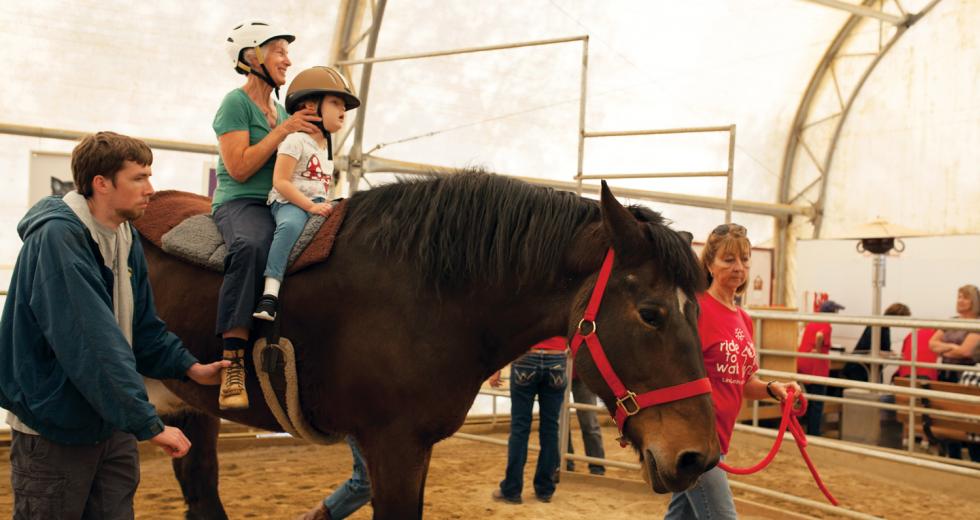What started with one pony bridled near a Granite Bay occupational therapy clinic in 1985, is now a 21-acre Lincoln ranch with a lake and 10 donated horses for the Ride To Walk physical therapy program. But when Dr. Kristine Corn thought to start integrating horseback riding into her program over three decades ago, she was not an equestrian. Corn had bought a pony named Freckles from a neighbor, but she didn’t even know how to put a saddle on a horse. And aside from some lessons as a child, she didn’t have much experience riding horses either.
As a physical therapist, Corn has worked with patients with a wide range of emotional, physical and learning disabilities. She’d heard of similar, equestrian-based therapies in Europe in the 1980s, so Corn decided to try it with her own patients. Wheelchairs are a static surface, but sitting on a horse is a dynamic surface, one that you have to actively work at to stay on. As Corn says, keeping yourself upright on a horse uses muscles in the neck and core that riders with disabilities often have trouble strengthening. Learning to ride gives people with limited mobility more control over their body, she says.
“A lot of my physical therapy clients who were in wheelchairs often only got out of them to get in and out of bed, to go to the bathroom, or to sit somewhere else or lay on the floor,” Corn says.
Starting with Freckles, she sat behind some of her clients to support and guide them. Some of those clients eventually gained the skill and strength to ride independently, she says. Today, the program serves clients of all ages, but most are between 2 and 16 years old. Most clients can start to ride independently at around 7 years old, depending on their progress.
For Rebecca O’Callaghan, that progress changed her life. O’Callaghan was born a “Micro Preemie,” (she weighed less than a pound at birth) and is a former client of Ride to Walk. When she came to Corn at six months old, she fit in a Kleenex box. “At the time there were not the same neonatal facilities we have today, Micro Preemies weren’t expected to be able to walk or talk,” Corn says.
O’Callaghan was referred to Corn’s physical therapy clinic at just six months old, to aid her development in building muscle strength and independence before she could even walk. Today she and Corn work together in the clinic, where O’Callaghan is an occupational therapist who gives back to the community she was a part of.
The Ride to Walk program has been in operation since 1985, and they have been improving their ranch since moving in 18 years ago. Use of the property is available to the public from dawn to dusk. To keep up with costs, the ranch also boards non-therapy horses, and the lake on site is also open for catch and release bass fishing for a $5, recommended donation. (The donations help the ranch provide rides — Corn’s clients pay half the cost and the ranch pays the remaining half.) Volunteers also help with therapy rides and maintaining the property.
The program costs $500 a month, but every client is given scholarship for half their costs, and it’s also possible to sponsor childrens’ riding or volunteer to assist them. “It’s a program that doesn’t exist without volunteers,” Corn says.



